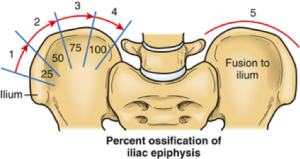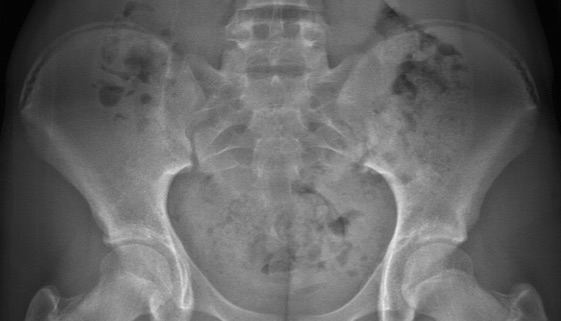The Risser Sign identifies the amount of ossification (the process of cartilage becoming bone) of the human pelvis as a measure of skeletal maturity. The amount of ossification is graded from 0 – 5. The process begins at the front of the pelvis and moves towards the spine.
Grade 0 – no epiphysis present
Grade 1 – 25% of the epiphysis present
Grade 2 – 50% of the epiphysis present
Grade 3 – 75% of the epiphysis present
Grade 4 – 100% of the epiphysis present
Grade 5 – Fusion of epiphysis to the ilium
The risser sign is very important in calculating the risk of progression of a scoliosis, as it is a sign of skeletal maturity. The lower the risser score the higher the risk of progression of a scoliosis (as skeletal growth is still occurring).
While statistically the risser score is associated with chronological age, variations are regularly observed. Calculation of scoliosis risk progression should not be made on magnitude of curve and age alone, risser sign must always be considered.
This article is for information only, for further information or for a diagnosis and treatment of scoliosis please contact us on 03 9787 7702 or scoliosis@vsrc.com.au


